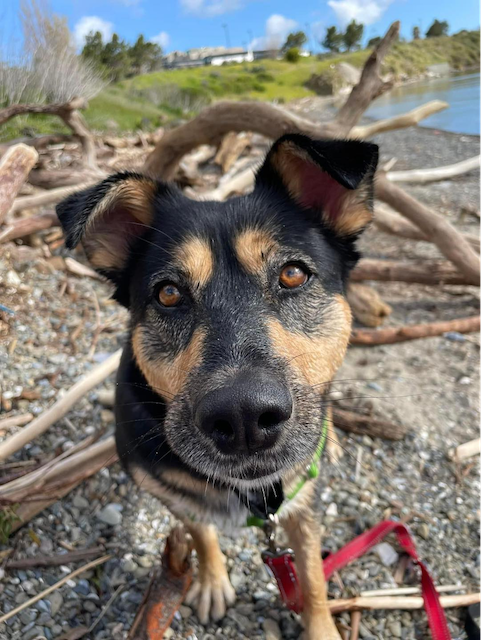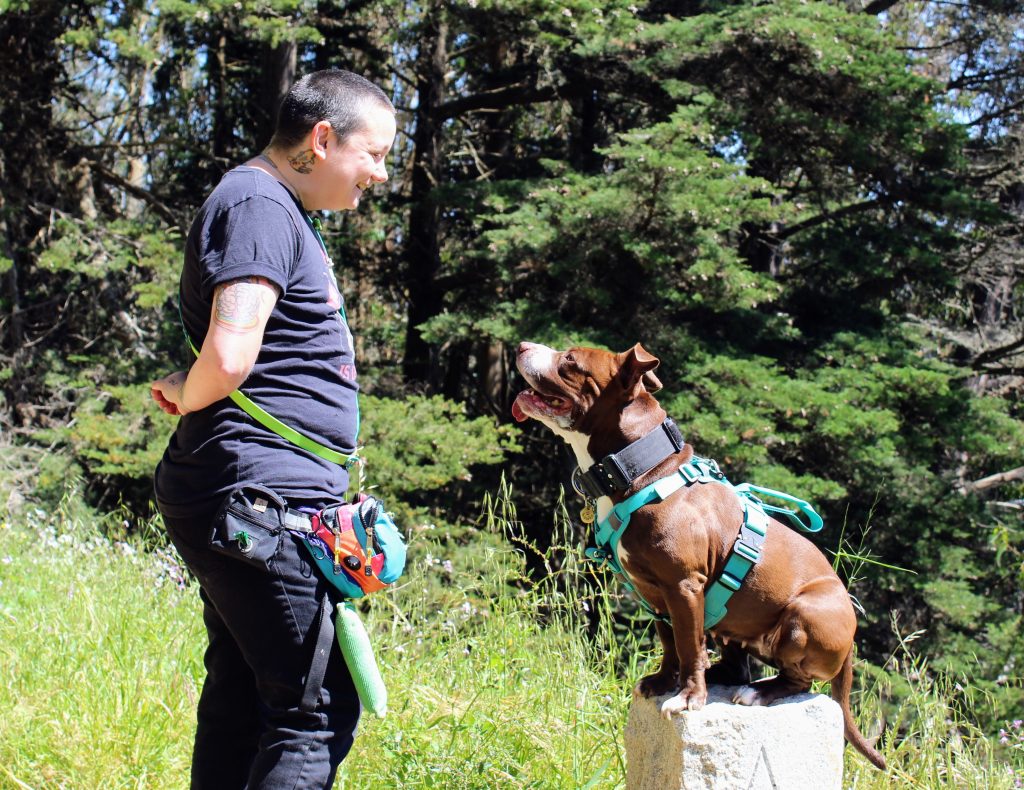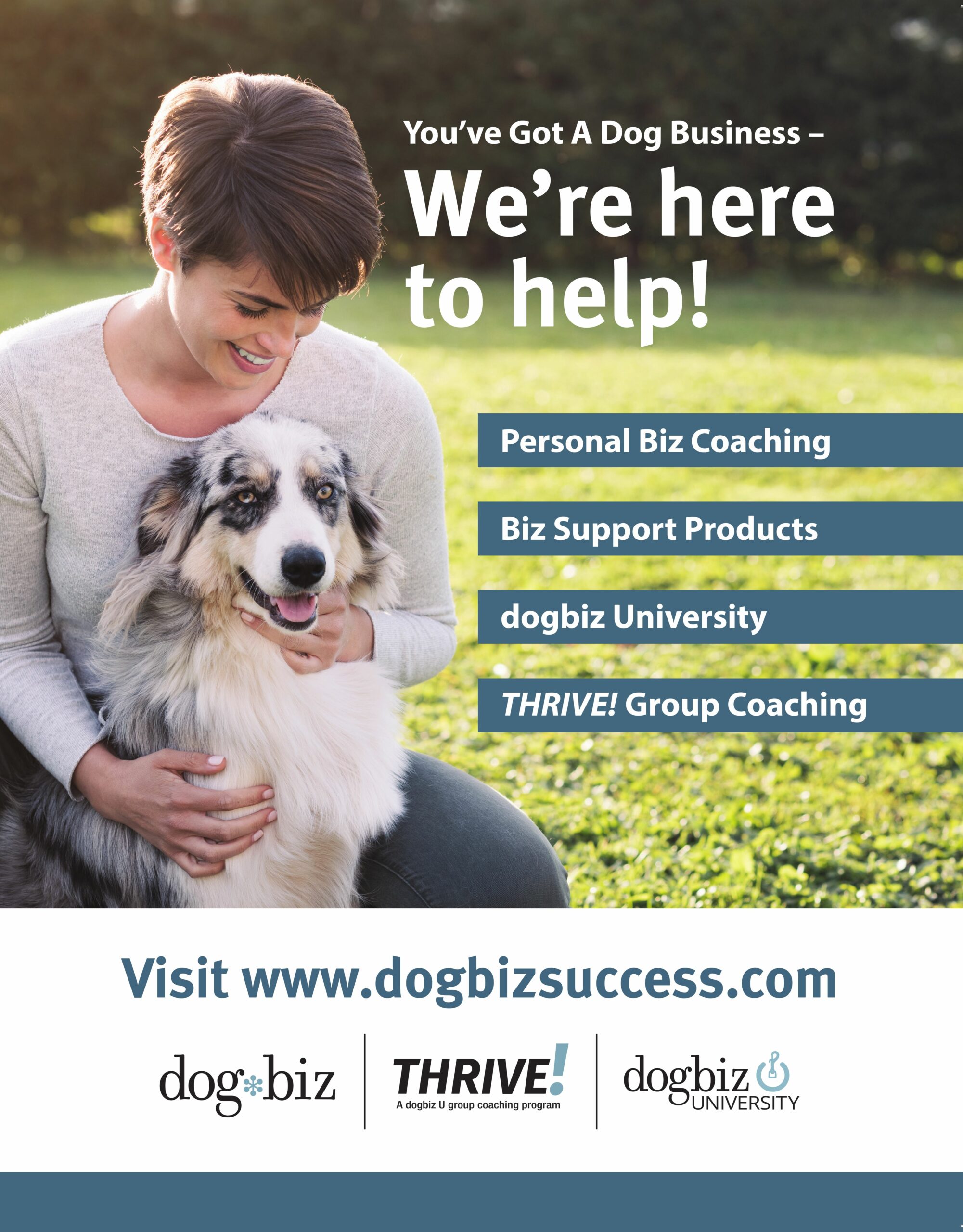Barks Blog
Shelter Dog Reactivity in the Big City: Daisy’s Success Story
Dogs living in a big city may face big challenges related to their environment and the expectations placed on them. As a long-time shelter worker and dog trainer, I’ve seen countless leash-reactive dogs enter the system who are ill-equipped to cope with life in a sprawling metropolis like San Francisco, where I live, and that includes two of the three dogs I’ve adopted myself. Those of us embroiled in sheltering and canine behavior modification may be familiar with the common refrain, “He just needs a backyard/farmland/island of his own and he’ll be fine.” While placement outside of the city may be beneficial for some of these dogs, the resources needed to accommodate all of them simply do not exist. Further, those suburban and rural communities that are hypothetically referred to likely already have their own overpopulation of dogs to manage. Lastly, this thinking, which is most often perpetuated by well-meaning folks, can end up being a band-aid solution for many of the dogs we apply it to, and may even result in long-term deprivation of the social contact they’re attempting to access.
So, what are we to do with reactive dogs in our busy cities who find themselves in the shelter? There is no one-size-fits-all solution that we can apply to these cases, as it’s well established that dogs can be reactive to a diverse set of stimuli under different types of motivation and to varying degrees. Added to this is the fact that animals under significant amounts of sustained stress may behave differently than those who are content in a stable home and with a predictable routine. Shelter staff often find themselves in the impossible predicament of understanding why a dog is reactive and what needs to be done to help them, but unable to execute any type of meaningful behavior modification plan due to the usual suspects: lack of training resources, inability to maintain handler consistency, and difficulty in marketing dogs who may be a tall order for the average adopter. Keeping all of this in mind, I’d like to take you on a 10-month journey involving one of my favorite shelter dogs of all time—Daisy.
Daisy (whose shelter name was Nancy) was the type of young adult shelter dog that made me melt. She was a smarty-pants shepherd mix with a winning smile, a love of training and toys, and one of the certifiably softest coats one might ever touch. The San Francisco Animal Care and Control (SFACC) shelter thought she might be a kelpie mix based on her appearance and behavior, but as those of us well-versed in the accuracy of pinpointing breed mixes on visual identification alone can probably guess, she wasn’t. Daisy had come in as a stray and no one claimed her, so once her hold was up, the first order of business was an assessment from one of our behavior staff. During her assessment, Daisy showed us that she loved food, stuffies, people, play, puzzles, cuddling, and other dogs. But, uhm … about that last thing. Daisy loved other dogs a little too much. Her dog-dog test revealed she was prosocial and highly interested in spending time with members of her own species. Great, right? Such a winner of a dog should have no trouble getting adopted!



Not so fast. Over the next few days, we learned that Daisy’s love of other dogs did not start and stop in our play yards, but instead splashed out into every occasion in which she might see another dog. Daisy was very leash reactive. Upon seeing another dog in the shelter, in the parking lot, and especially on our busy Mission neighborhood streets, Daisy just had to let it be known that she really, really wanted to say hi. This presented a challenge for volunteers trying to navigate the city sidewalks with a dog they didn’t know that well and might not be able to manage effectively. Additionally, this was a PR problem for Daisy that would affect her reputation, both among the team of volunteers who were expected to walk her and any potential adopters. Without intervention it was unlikely that Daisy would be successful in the shelter.
Using the knowledge that Daisy’s reactivity was based in barrier frustration (i.e., the leash was perpetually thwarting her attempts to interact to the point of desperation), the Behavior Team began to formulate a plan. The ingredients that made up the recipe for Daisy’s success involved:
- Empathy and understanding
- Reactivity prevention, management, and modification
- Dog play
- Enrichment opportunities
The first order of business was to ensure that our dog volunteers understood Daisy and had empathy for her behavior. We were fortunate to already have a volunteer base comprised of deeply empathetic folks who take their role in the shelter seriously and lead with kindness. Even the most compassionate volunteer might still avoid a dog who’s consistently making people give them the stink-eye in the streets, so it was critical that the behavior staff educate volunteers on the “how’s” and “why’s” of on-leash reactivity. We offered a special session of our Reactivity CE class, posted it to our private volunteer group about Daisy, and provided one-off counseling to volunteers who were unable to attend the class or needed additional coaching. In the meantime, Daisy was slowly growing a fan club of volunteers who recognized what a truly spectacular dog she was outside of her reactivity. We all contain multitudes! One volunteer remarked,
I took [Daisy] out right away after she got to the shelter. Immediately was amazed at how soft her coat was because looking at her I didn’t think it was going to be that soft. She was sweet and attentive, and I enjoyed walking her, but when we got back, I sat on the bench out in the parking lot, and she immediately jumped up and sat next to me with her rear almost on my lap and stayed there for the longest time. She really enjoyed scratches and sweet talk.


Another said, “I just remember her being so sweet with me during her outings while on FETCH [Friends Enriching and Training Custody Holds], enjoying pets and being so engaged.”
Behavior staff knew it would also be critical to help volunteers identify what they could do during their neighborhood walks to ease Daisy’s reactions and respond effectively if they found her “going off” while with them. We produced what we refer to as a Behavior Blueprint for Daisy—a one-page document outlining how volunteers should manage her behavior during neighborhood walks. The document is deliberately capped at one page so we don’t risk losing volunteer attention or confusing anyone with too-complex instructions and contingencies. It outlines why a dog might behave in the way that earned them the blueprint, how to enter their kennel and any pre-walk exercises to focus on, and then a walk protocol detailing how to prevent the behavior in the first place, as well as exactly what to do if/when they encounter the behavior.
Daisy’s Behavior Blueprint wasn’t intended to modify her behavior. Due to the aforementioned challenges of executing behavior modification in a municipal/low-resource shelter setting, we were instead aiming to manage her reactivity so that she might persevere through her shelter stay until the right home came along. After several weeks of following the blueprint, volunteers began reporting that she was becoming less reactive. When asked for feedback on their time with Daisy for this article, volunteers had this to say:
[Daisy] had a Behavior Blueprint about how to manage her reactivity. One day when I walked her, [she] refused to leave her rawhide behind. With the rawhide in her mouth, she was the perfect angel we knew her to be, and paid no attention to passing dogs!
She had a fixation on other dogs at first, and surprisingly got better [over] time if we happened to see a dog.
I also remember how we worked on her dog fixation and redirecting her attention to the point that she was so easy to redirect by calling her name … she was the most resilient dog I had met at the [shelter]. I honestly was puzzled she was not adopted for so many months.
It turned out our volunteers were doing such an A+ job at following Daisy’s blueprint that she had begun to develop different feelings upon seeing other dogs. This is classical counterconditioning in action, and it’s the foundation for a lot of training for dogs who are upset about something. Daisy formerly felt a lot of frustration because she couldn’t access other dogs, and those feelings were now being replaced with the same ones we feel when we’re eating something delicious. We also saw twinklings of operantly trained DRI (differential reinforcement of incompatible behavior), in which Daisy was replacing the behavior of barking/lunging/spinning with the behavior of looking to her handler for treats.
The Behavior Team knew that preventing on-leash reactions and responding to them quickly when they did happen was only one piece of the Daisy puzzle. Because she loved other dogs, we also wanted to ensure she was getting a regular dose of them to help satiate her need to socialize. I say “need” and not “want” because dogs are highly social animals, and positive interactions with members of their own species is not optional when addressing overall wellness. A percentage of dogs are truly anti-social or otherwise have behavior issues that prevent them from socializing, but this wasn’t the case with Daisy, despite how scary her on-leash reactions could look to most people. The Behavior Team ran weekly playgroups with a squad of specially trained volunteers who were well-versed in dog body language and play management, and Daisy was a star participant throughout her 10 months in the shelter. She was an intense and high-energy playmate, so we took care to match her with other dogs who enjoyed her play style and forwardness. One of Daisy’s playgroup volunteers reminisced, “Something that sticks with me is her awesome playgroup behavior. She was so patient with other dogs—such a playgroup superstar. She also maintained really well during her time.” One of Daisy’s favorite pastimes involved playing tug with other dogs and letting bigger bully mixes drag her across the yard by the other end of the stuffie in her mouth as her energy began winding down at the end of a session.
All photos © SFACC
Lastly, we made sure Daisy’s big brain was being exercised as best we could, given our limited resources. A couple of volunteers took her on long excursions all over the city and on sleepovers on an almost-weekly basis, and one of her favorite volunteers had this to say about their time together:
I believe I was the first one to take [Daisy] out on a walk after she was moved to the available side of the shelter. She was easy to leash up and an excellent walker; however, I realized she was reactive when we encountered an aggressive dog on our first walk. After that experience, I knew I needed more specialized training as I wanted to continue working with [Daisy]. I decided to dedicate more of my time at the shelter to working with [Daisy]. I took her on longer walks in Golden Gate Park, The Presidio, Pier 39, and Chrissy Field where she enjoyed greeting people and smelling flowers. … Over her 10-month stay at the shelter, we formed quite a special bond. She even came home with me for several sleepovers.



Daisy also participated weekly in volunteer-run nosework opportunities that allowed adoptable dogs to show off their brilliant sense of smell and ability to seek out food in increasingly challenging puzzles and cardboard box setups. The volunteer coordinating nosework opportunities remarked that Daisy was “one of our top two Nose Work stars of all time.”
All of the above was well and good, but we needed to get our girl adopted! After a long wait full of playgroups, training, field trips, sleepovers, enrichment, photo shoots, kennel massages, frozen Kongs, and all the other good stuff our volunteers brought to the table, the fateful day came when Daisy met her person. Now living in her adopter’s home state of Massachusetts, Daisy found a best friend in her owner, Alyssa, who describes her as “a ball of sunshine and love. I feel so blessed we found each other.” Alyssa continued,
[Daisy was d]efinitely (…) very loved and cared for. SFACC does tremendous work and their staff work so hard with so very little. I so appreciate all their efforts in trying to make the dogs as comfortable as possible and all the compassion they continuously display as we all know shelters are tough environments for dogs.

You can check out more photos of Daisy and her recent cross-country road trip on her Instagram account: https://www.instagram.com/daisysnewadventures

Leo “LT” Taylor (CTC, CPDT-KA) has worked and volunteered in San Francisco shelters for over 13 years. As they have told the hundreds of dog volunteers they’ve trained, “It’s rarely the case that a dog would choose to be in (even the ‘nicest’) shelter, so it’s our job to bring the light back into their lives during an otherwise difficult chapter.” LT graduated with honors from the prestigious Academy for Dog Trainers and has recently launched their own private training biz, Little King Trash Dog Training & Behavior Consulting, named after their deaf former shelter dog Lemmy, who was found evading people and digging through trash cans in San Francisco’s Golden Gate Park. LT believes every shelter dog deserves patience, respect, and an understanding of why they are the way they are by the people entrusted with their care.

